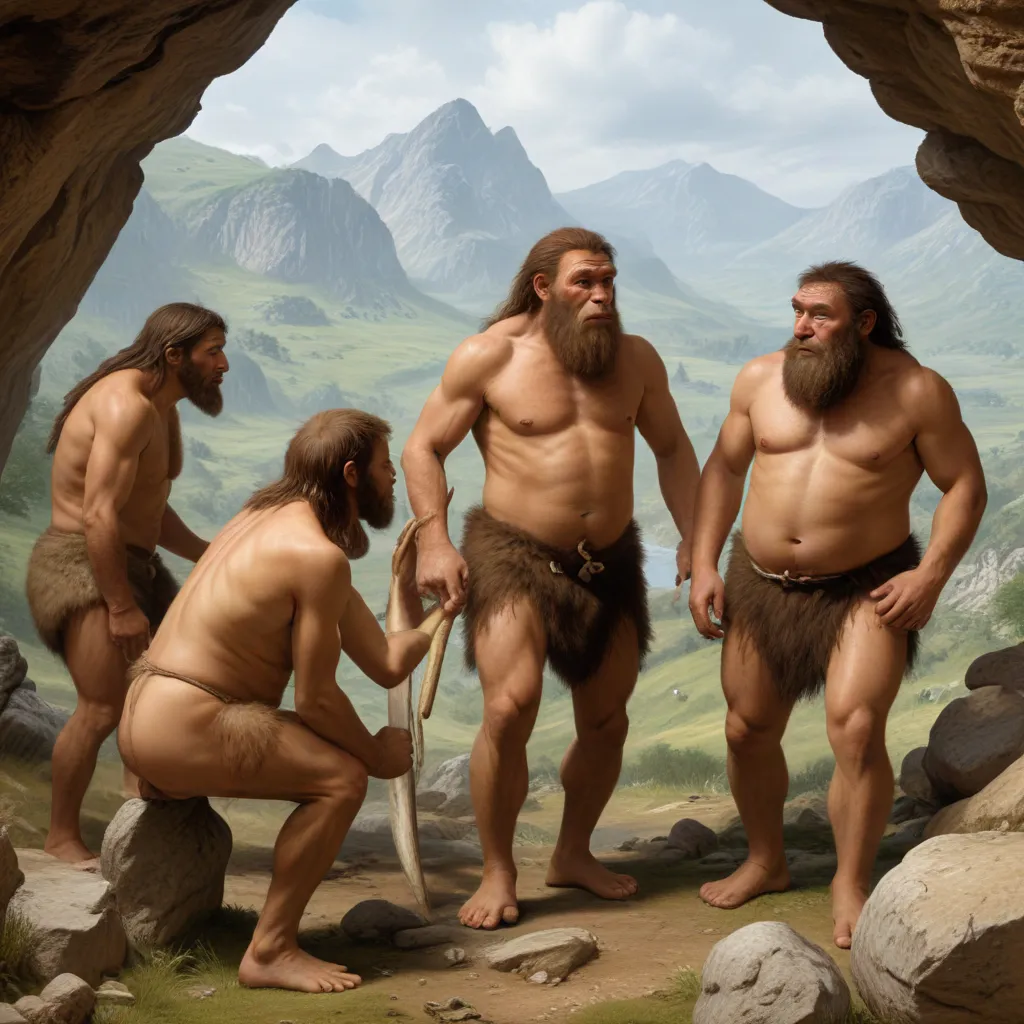
Our understanding of the dietary adaptations in our ancient human cousins, the Neandertal (Hn) and Denisovan (Den), has evolved significantly in recent years. Advances in ancient DNA analysis and comparative genomics have shed light on the genetic underpinnings of how these archaic populations optimized their nutrient intake to thrive in diverse environments.
Neandertal Dietary Adaptations
Hn were highly adept at processing lipids and proteins from an animal-based diet. Analysis of their genome copy number variation (CNV) reveals that Hn maintained a strong lipid metabolism pathway, with increased copies of genes like CLPS, CLPSL1, and LPA involved in lipid hydrolysis and fatty acid oxidation. This suggests Hn were well-equipped to efficiently digest and metabolize the high-fat, high-protein foods available in their cold, temperate environments.
In contrast, Hn showed fewer copies of AMY1A/B/C, the genes responsible for producing the salivary amylase enzyme that breaks down dietary starch. This points to a relative scarcity of carbohydrate-rich plant foods in their typical foraging habits. However, some late Hn individuals, such as those from Les Cottés in France, had increased AMY1 copies, hinting at a broader foraging strategy as they encountered expanding Homo sapiens (Hs) populations.
Hn also exhibited adaptations to cope with the environmental stressors of their boreal habitats. Increased copies of genes like MST1 and H1.2 suggest Hn had enhanced brown fat metabolism and thermogenic capacity, allowing them to better tolerate cold conditions. This metabolic efficiency may have contributed to Hn’s large body size and unique skeletal features, which were likely advantageous for conserving heat in chilly Eurasian environments.
Denisovan Dietary Adaptations
Den, a sister group to Hn, inhabited high-altitude regions of Asia and likely faced different dietary challenges than their temperate-dwelling Hn cousins. Genomic evidence suggests Den developed specialized adaptations for cold climate survival and high-altitude foraging.
The Den genome displays increased copies of genes involved in lipid metabolism and brown fat thermogenesis, mirroring the adaptations seen in Hn. This metabolic profile was likely crucial for weathering the harsh, low-oxygen conditions of the Tibetan Plateau and other mountainous regions where Den populations thrived.
Furthermore, Den seemed to have cultivated distinct foraging strategies, with genetic signatures pointing to a reliance on specialized food sources. For instance, increased copies of the TPSAB1/B2 gene cluster, linked to mast cell function and innate immunity, may have equipped Den to effectively process and defend against toxins in their local flora and fauna.
Sapiens Dietary Adaptations
In contrast to the more specialized diets of Hn and Den, the dietary adaptations of Hs show a diversification and optimization of their nutrient intake as they spread across the globe.
A key adaptation was the increased duplication of AMY1A/B/C, which enabled Hs to effectively break down starch-rich foods. This genetic shift likely facilitated Hs’ transition to more plant-based diets, including the eventual adoption of agricultural practices. The AMY1 duplication was already present in the earliest known Hs populations, such as Ust’Ishim in Siberia, suggesting this adaptation predated the rise of organized farming.
Hs also exhibited increased copies of genes involved in carbohydrate metabolism (e.g., SULT1A3/4, SLX1A/B, UGT2B28), further enhancing their ability to process a wider variety of plant-derived nutrients. This dietary diversification and optimization may have provided Hs with a metabolic advantage as they colonized new environments and encountered novel food sources.
Evolutionary Implications
The contrasting dietary adaptations observed in Hn, Den, and Hs highlight the niche differentiation that occurred among these archaic human populations as they dispersed across Eurasia. Hn and Den seemed to have carved out specialized dietary niches focused on animal-based and high-altitude foraging, respectively, while Hs exhibited a more generalist and adaptable approach to nutrition.
These genetic signatures of dietary adaptation likely played a key role in the survival and reproductive success of each population, contributing to their unique evolutionary trajectories. The ability of Hs to thrive on a more diverse diet may have provided a metabolic resilience that bolstered their fitness and aided in their eventual expansion and replacement of other archaic human lineages.
Comparative Genomics
Comparative analyses of the Hn, Den, and Hs genomes have revealed adaptive introgression of beneficial genetic variants between these populations. For example, the APOL1 gene, which confers resistance to sleeping sickness, was likely acquired by Hs through gene flow from Hn and Den ancestors.
Similarly, the SLC16A11 haplotype associated with an increased risk of type 2 diabetes seems to have been introgressed into Hs from Hn or closely related archaic populations. These cross-species gene flow events highlight the dynamic nature of human evolution and the important role that dietary adaptations have played in shaping the genomic landscape of modern humans.
Furthermore, the ancestral dietary reconstructions enabled by ancient DNA research provide invaluable insights into the coevolutionary relationships between humans, their environments, and the food resources they have historically exploited. These findings can inform our understanding of how gene-culture interactions have influenced the development of modern human health and nutrition.
Ultimately, the genetic adaptations uncovered in Hn, Den, and Hs demonstrate the remarkable dietary plasticity and resilience of our ancestors, who were able to thrive in a wide range of environments by optimizing their nutrient intake. This evolutionary legacy continues to shape the health and well-being of modern populations, underscoring the importance of understanding the biocultural influences on human dietary patterns and their long-term implications.
For more information on the winemaking journey and wine’s health benefits at Wine Garden Inn, be sure to check out our other articles.
